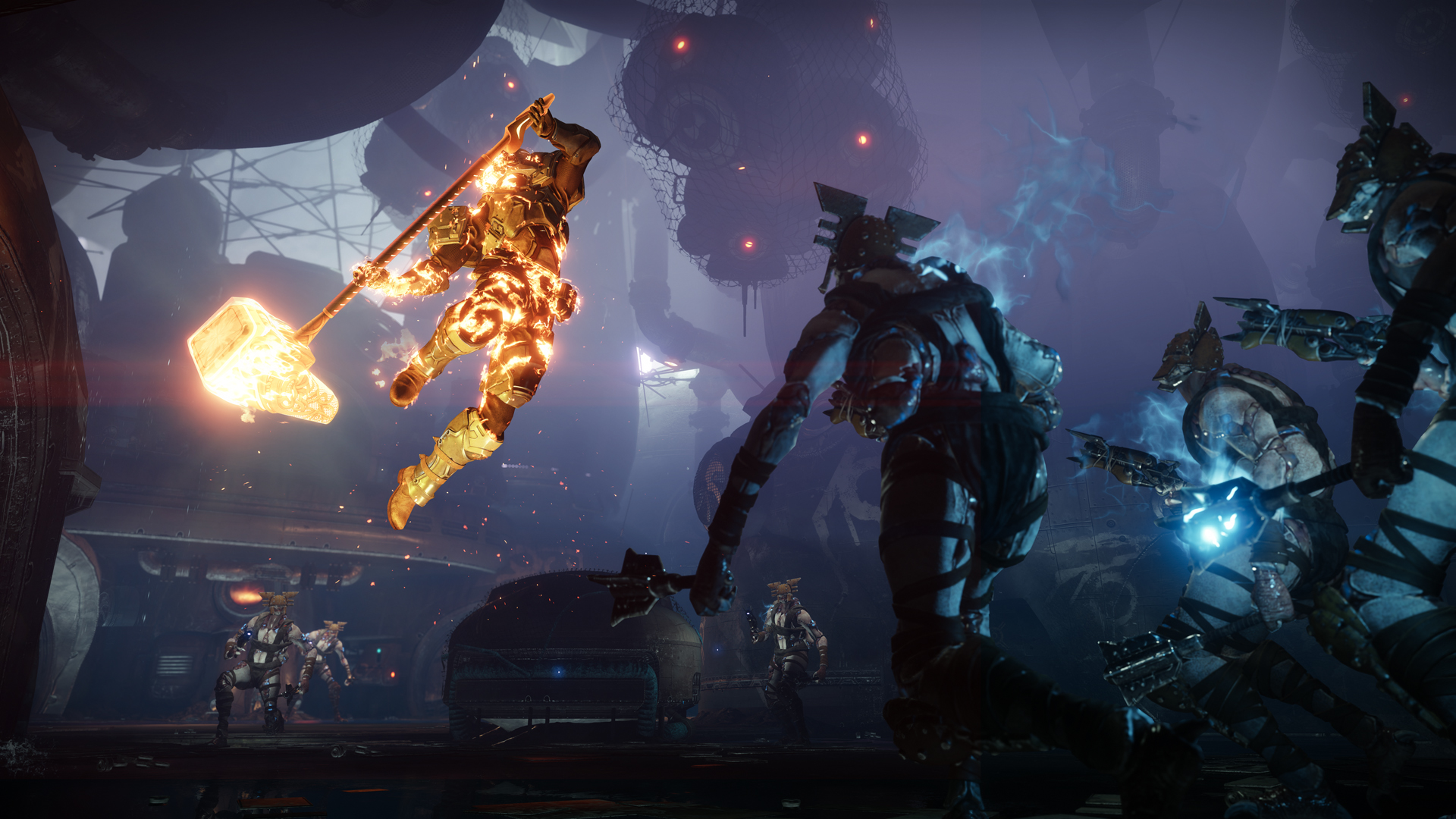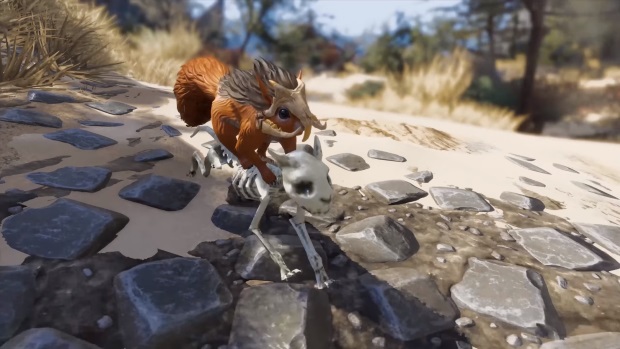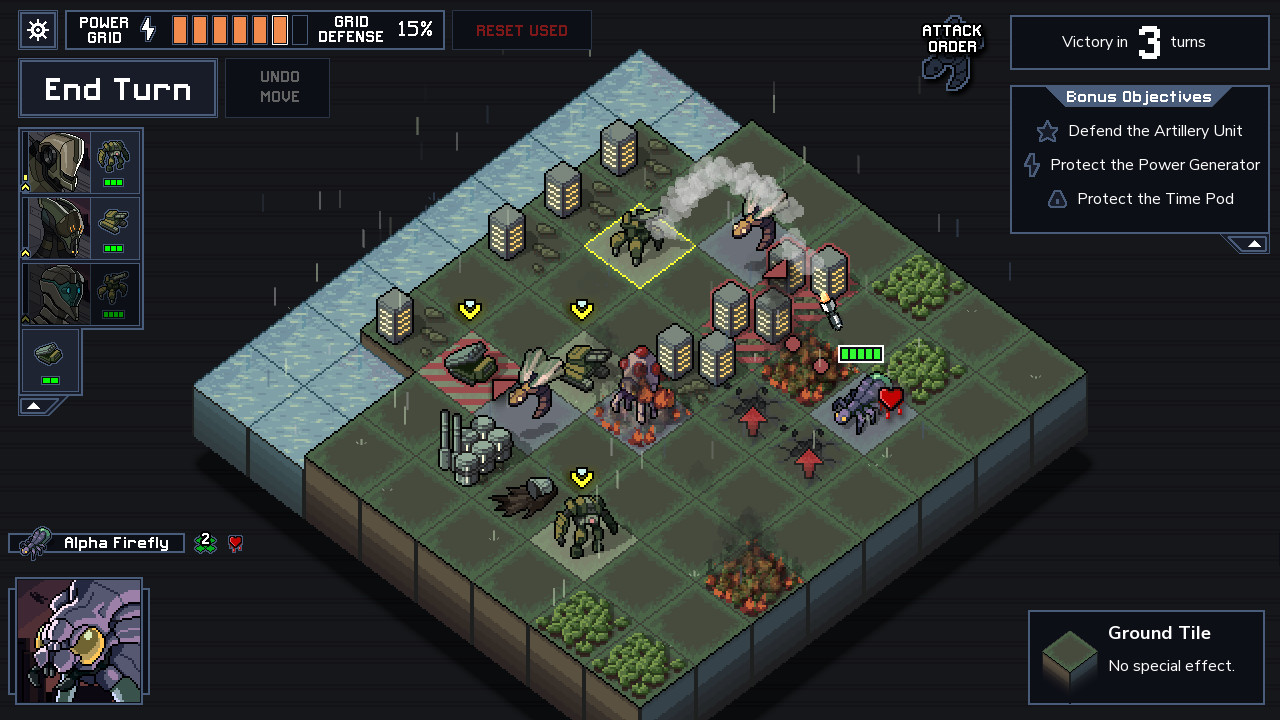Rich McCormick's 5 best games of 2018
An update on the update man
I realise, at the end of 2018, that I’ve spent much of the year digging back over games released in 2017 and earlier. That’s in part because I’ve been subject to the demands of evil overlord Graham, but also because I’ve been trapped in the gravity well of monster timesinks like Destiny 2 and Divinity 2. When I did reach escape velocity, I cherished my time in the kind of small-and-perfectly-formed games that 2018 did so well: Dead Cells, Celeste, The Banner Saga 3. All of which get honourable mentions in my list, but get beaten out by…
Return of the Obra Dinn

Return of the Obra Dinn only gives you a few ways to interact with its grainy CRT world: a time-altering pocketwatch and a ledger, tools your insurance assessor-cum-chronomancer can use to work out what the hell went on aboard the eponymous ship.
It should be a restrictive experience - one boat, one book, one monster trip to small claims court - but I was more daunted by Obra Dinn’s pervasive freedom. The ledger is empty on first arrival, and the web of murders and mutinies initially feels too tangled to ever solve.
But Obra Dinn’s success is in making this web scalable. Like Her Story before it, Obra Dinn distils videogame choices down into crystalline form, before sprinkling them all over its short runtime. Hundreds of options are whittled down by virtue of your own brain power, the game leaning in only occasionally to reveal major plot points in snippets of the crews’ final moments.
There’s a right answer on the Obra Dinn, but the pace of storytelling and the game’s willingness to stand aside, to let you feel your way through the ill-remembered past, made it feel like I got there myself. That’s an intoxicating feeling.
Warhammer 40,000: Mechanicus

My entire life has been spent in an elliptical orbit around Games Workshop’s Warhammer worlds, swinging close in my pre-teens, before whizzing away to a distance that allowed for plausible deniability once I got a bit older. I’m back again now, though - like an incredibly nerdy Halley’s comet - and I’ve got a cupboard full of grey plastic miniatures, a phalanx of tiny paint pots, and a sizeable dent in my bank account. All I needed to immerse myself fully was a game that transported me to the grimdarkness of the far future.
Mechanicus does that niftily. It tells a smaller, spookier story than most 40k games, and in featuring the spidery steampunk Adeptus Mechanicus as its protagonists, avoids the problems that other studios have had in starring Space Marines in the title role. Namely, that you’re either cheering for a violent space racist or a faceless Disney prince in power armour.
That muted atmosphere lends a creeping threat to Bulwark’s XCOM-a-like, and that sense of danger has been amplified by the developer’s balance patches, which have lessened Mechanicus’s main problem at launch: that it was too easy. The result is a game that fits its source material like a bio-mechanical implant, but also stands on its own skittering legs as a tactical challenge.
Destiny 2: Forsaken

I was done. I was out. I’d kicked my Destiny problem, finally, a few months after the launch of Destiny 2 on PC. This year, Forsaken pulled me back.
Destiny 2 was built to streamline the weird MMO monster that console Destiny had become, shortening the loot treadmill, democratising the distribution of weapons, and making changes that set out to respect the playerbase’s time. It turned out it wasn’t what they wanted. It wasn’t what I wanted.
What I wanted, apparently, was Forsaken. This chunky update could’ve been reductively titled Destiny 2.5, making sweeping alterations that included adding a full campaign, reintroducing the concept of good and bad drops for loot, and upping the player count for standard multiplayer modes. More generally, it made Destiny 2 something I could play as a second job again, letting me dig in for weeks at a time to chase specific guns and the serotonin boosts I got when they dropped.
Divinity: Original Sin 2 - Definitive Edition

It’s a bit of a cheat sneaking Divinity 2 in here when the base game technically came out in 2017, but it was this year’s Enhanced Edition that properly lulled me into Larian’s fantasy RPG. Divinity 2 is the maximalist’s RPG: a game of elves and dwarves and wizards that embraces its high fantasy inspirations, piling sexy lizards, talking slugs, and world-weary skeletons on top of its wobbling world. The result - Rivellon - is so stuffed with stuff that it’s just a joy to explore, its corners full of weird creatures, characters, and miniature stories that have stuck with me with longer than most RPG fetch quests ever did.
I bought passage from a torturer with a bit of exploded leg. I snuck off from my mates in a pub to have a cuddle with a spider. Four decapitated heads in a forest alternately advised me to open, and not open, a suspicious-looking treasure chest. In an age of gritty and grimy reboots and reinventions, there’s something lovely about Larian taking a host of fantasy cliches and producing such a lively game.
It’s still dealing in world-ending stuff still, of course - this is an RPG - but it’s handled with a lightness of touch that kept me playing through its 80-hour runtime. The Enhanced Edition goes even better, propping up Divinity 2’s once-flaccid final act, and helping the RPG close out as strongly as it starts off.
Into The Breach

Between Obra Dinn and Into The Breach, It’s been a banner year for travelling back in time to witness a whole load of grisly deaths. Like Obra Dinn, Into the Breach manages to cultivate a weighty atmosphere despite its limited graphical palette, representing the end of the world on a series of eight-by-eight isometric grids.
The giganto-bugs bringing about the apocalypse are rendered cute in pixel art incarnations, but they’re nasty fuckers, massacring hundreds and destroying entire cities if left alone. Into The Breach demands that players plan their moves carefully, shuffling their team of mechs around like chess pieces, but it quickly becomes apparent that you’re not getting out without some losses. Between managing power levels, mech health, city shields, and enemy movement, you’ve always got 20 holes to plug and only two hands to do it with.
Towers fall, people die, mechs get blown up - but as long as you’re still hanging on, there’s a way back. This is where Into The Breach veers off from the Subset Games’ spaceship panic-’em-up, FTL: the newer game is consistently fairer, and less willing to throw insurmountable odds at you early on. That makes victory, if it does come, even more thrilling: the result of some serious backs-to-the-wall tactical nous rather than the single, perfect, lucky run.
